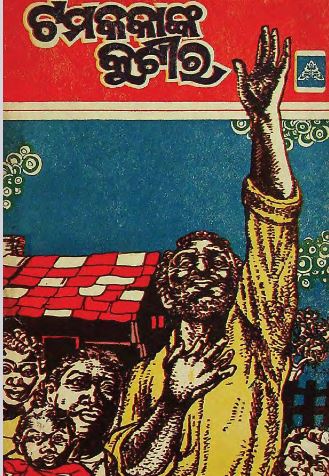Odia literature has a long and rich history, with numerous masterpieces that have left an indelible mark on the literary landscape. Among these, “Tam Kakanka Kutira” holds a special place. Translated from Harriet Beecher Stowe’s famous novel, this adaptation by Chintamani Mahapatra has captivated readers since it was first published in 1978, and later reprinted in 1989. In this post, we will delve into the tale’s fascinating storyline, Stowe’s influences, and the impact of the translation on Odia literature.
“Tam Kakanka Kutira” takes readers on an emotional journey through the lives of the characters. Set against the backdrop of the cruel institution of slavery in 19th century America, the novel sheds light on the hardships endured by slaves and their relentless pursuit of freedom. Stowe’s captivating writing style brings to life the emotions, experiences, and aspirations of each character, allowing readers to empathize with their struggles and triumphs.
Harriet Beecher Stowe’s Inspirational Work:
Harriet Beecher Stowe, an American author, wrote the original novel “Uncle Tom’s Cabin” in 1852. By presenting a realistic depiction of slavery, she aimed to challenge the moral consciousness of her readers and contribute to the abolitionist movement. Stowe’s novel became an instant sensation and played an instrumental role in changing public opinion on slavery. Chintamani Mahapatra recognized the significance of this literary masterpiece and decided to translate it into Odia, making it accessible to a wider audience.
Chintamani Mahapatra’s translation of “Uncle Tom’s Cabin” into Odia as “Tam Kakanka Kutira” was a significant milestone in Odia literature. By bringing this powerful narrative to the people of Odisha, Mahapatra not only introduced them to Stowe’s timeless work but also shed light on the universal themes of oppression, inequality, and resilience. Mahapatra’s accurate and nuanced translation ensured that the essence of Stowe’s storytelling was preserved, capturing the hearts of Odia readers.
The publication of “Tam Kakanka Kutira” had a profound impact on Odia literature. It introduced Odia readers to English literature while providing a platform for conversations about social justice and human rights. The novel sparked discussions on the power dynamics prevalent in society and encouraged readers to reflect on their own lives. Moreover, Chintamani Mahapatra’s efforts as a translator opened doors for future translations, enriching the Odia literary scene.
“Tam Kakanka Kutira” is a testament to the power of literature to transcend boundaries, languages, and cultures. Harriet Beecher Stowe’s original masterpiece, translated with utmost dedication and skill by Chintamani Mahapatra, has left an indelible mark on Odia literature. This novel continues to inspire readers with its poignant portrayal of the human spirit’s resilience in the face of adversity. As we celebrate the cultural exchange between two great literary traditions, the legacy of “Tam Kakanka Kutira” remains alive, reminding us of the power of storytelling to ignite change.
Books Info
| Books name | Tam Kakanka Kutira/ଟମକକାଙ୍କ କୁଟୀର |
| Author | Harriet Beecher Stowe; Chintamani Mahapatra, Tr. |
| No Of pages | 97 |
| Publisher | Lark books |
| Publication | 1978, 1989 rp. |
| Printed At | Shobhana |
| Distributor | NA |

